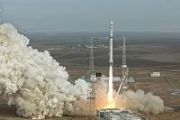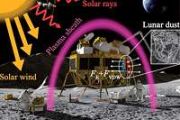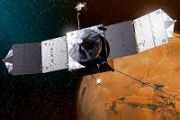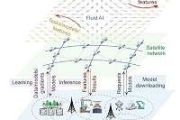
Copernical Team
FAA closes investigation into Blue Origin New Glenn booster failure
This request seems a bit unusual, so we need to confirm that you're human. Please press and hold the button until it turns completely green. Thank you for your cooperation!
Press and hold the button
If you believe this is an error, please contact our support team.
185.132.36.159 : 7ed71092-5270-4563-9eb4-8b2727f7
Fixing cracks in space bricks with bacteria
This request seems a bit unusual, so we need to confirm that you're human. Please press and hold the button until it turns completely green. Thank you for your cooperation!
Press and hold the button
If you believe this is an error, please contact our support team.
185.132.36.159 : 4db81958-dd02-4947-a2fb-471e8d7f
Bitcoin investor buys an entire SpaceX flight for the ultimate polar adventure
This request seems a bit unusual, so we need to confirm that you're human. Please press and hold the button until it turns completely green. Thank you for your cooperation!
Press and hold the button
If you believe this is an error, please contact our support team.
185.132.36.159 : 67f81164-7b3e-4e09-bfdf-5837ab2c
Mandalay rupture
 Image:
Mandalay rupture
Image:
Mandalay rupture IRIDE satellite captures first high resolution image over Italy
 The initial image from Italy's IRIDE Earth observation mission was unveiled today, depicting a high-detail strip of the Italian peninsula, including Rome, at a resolution of 2.66 meters. This marks a threefold improvement over previous standard satellite data available for the region.
Captured by the Pathfinder Hawk microsatellite on March 5, 2025, the image was taken during a pass over ce
The initial image from Italy's IRIDE Earth observation mission was unveiled today, depicting a high-detail strip of the Italian peninsula, including Rome, at a resolution of 2.66 meters. This marks a threefold improvement over previous standard satellite data available for the region.
Captured by the Pathfinder Hawk microsatellite on March 5, 2025, the image was taken during a pass over ce York U research sheds light on earliest days of Earth's formation
 New research led by a York University professor sheds light on the earliest days of the Earth's formation and potentially calls into question some earlier assumptions in planetary science about the early years of rocky planets. Establishing a direct link between the Earth's interior dynamics occurring within the first 100 million years of its history and its present-day structure, the work is on
New research led by a York University professor sheds light on the earliest days of the Earth's formation and potentially calls into question some earlier assumptions in planetary science about the early years of rocky planets. Establishing a direct link between the Earth's interior dynamics occurring within the first 100 million years of its history and its present-day structure, the work is on How survivors spanned the globe after Earth's biggest mass extinction
 Scientists don't call it the "Great Dying" for nothing. About 252 million years ago, upward of 80% of all marine species vanished during the end-Permian mass extinction - the most extreme event of its kind in Earth's history.
What followed was a mysterious, multimillion-year span that could be called the "Great Dulling," when marine animal communities looked
Scientists don't call it the "Great Dying" for nothing. About 252 million years ago, upward of 80% of all marine species vanished during the end-Permian mass extinction - the most extreme event of its kind in Earth's history.
What followed was a mysterious, multimillion-year span that could be called the "Great Dulling," when marine animal communities looked Skyloom completes OCT hardware deliveries for SDA York mission
 Skyloom Global Corp. has finalized the production and shipment of 42 flight-grade optical communication terminals (OCTs) to York Space Systems, marking a critical contribution to the Space Development Agency's (SDA) Tranche 1 Transport Layer initiative.
Manufactured entirely within the U.S., the OCTs highlight Skyloom's expanding industrial capability and reinforce American leadership in s
Skyloom Global Corp. has finalized the production and shipment of 42 flight-grade optical communication terminals (OCTs) to York Space Systems, marking a critical contribution to the Space Development Agency's (SDA) Tranche 1 Transport Layer initiative.
Manufactured entirely within the U.S., the OCTs highlight Skyloom's expanding industrial capability and reinforce American leadership in s SES and SpeQtral join forces to enable secure quantum communications across continents
 SES and Singapore-based SpeQtral have signed a Memorandum of Understanding (MoU) to co-develop a new Optical Ground Station (OGS) aimed at facilitating long-distance satellite-based Quantum Key Distribution (QKD) between Europe and Asia.
This agreement sets the stage for both companies to link their current and future QKD satellite networks through a shared, interoperable OGS. The goal is
SES and Singapore-based SpeQtral have signed a Memorandum of Understanding (MoU) to co-develop a new Optical Ground Station (OGS) aimed at facilitating long-distance satellite-based Quantum Key Distribution (QKD) between Europe and Asia.
This agreement sets the stage for both companies to link their current and future QKD satellite networks through a shared, interoperable OGS. The goal is HawkEye 360 partners with Space Force for real-time space threat tracking
 HawkEye 360, a leading provider of radio frequency (RF) intelligence and analysis, has officially joined the U.S. Space Force's Space (S4S) Commercial Integration Cell (CIC), marking a key step in advancing public-private collaboration for national defense in orbit.
The CIC, housed within the Combined Space Operations Center (CSpOC), enables dynamic information sharing between U.S. Space C
HawkEye 360, a leading provider of radio frequency (RF) intelligence and analysis, has officially joined the U.S. Space Force's Space (S4S) Commercial Integration Cell (CIC), marking a key step in advancing public-private collaboration for national defense in orbit.
The CIC, housed within the Combined Space Operations Center (CSpOC), enables dynamic information sharing between U.S. Space C 































